Nestled in the heart of aquariums across the globe, the vibrant and enchanting Cherry Shrimp (Neocaridina davidi) have captured the hearts of hobbyists and enthusiasts alike. These tiny, red jewels of the freshwater world belong to the Atyidae family, sharing a close kinship with other popular aquarium inhabitants such as Amano Shrimp and Bamboo Shrimp.
Table of Contents
But what makes these little crustaceans so captivating? Perhaps it’s their striking red coloration, which earned them the moniker “Cherry Shrimp” in the aquarium trade. Or maybe it’s their peaceful temperament and adaptability, making them the perfect addition to any community tank.
Hailing from the freshwater streams and rivers of Taiwan, these bottom-dwelling beauties thrive in habitats rich in vegetation and organic matter. Their diet consists primarily of algae, biofilm, and small particles of detritus, making them an invaluable asset in maintaining a clean and balanced aquarium ecosystem.
In the wild, Cherry Shrimp have a lifespan of about 1-2 years, but with proper care in captivity, they can live up to 2-3 years. Females typically grow larger than males, reaching a maximum size of around 1.5 inches (4 cm), while males top out at about 1 inch (2.5 cm).
Interestingly, Cherry Shrimp are known for their ability to adapt to a wide range of water parameters. They can tolerate temperatures between 65-85°F (18-29°C), pH levels from 6.5-8.0, and hardness levels from 3-15 dKH. This adaptability has contributed to their widespread popularity among aquarists of all skill levels.
When it comes to tank mates, Cherry Shrimp are generally peaceful and can coexist with a variety of other species. However, it’s essential to avoid housing them with larger, aggressive fish that may view them as a tasty snack. Some ideal tank mates include small, peaceful fish like Ember Tetras, Endlers Livebearers, and Pygmy Corydoras, as well as other invertebrates like Nerite Snails and Mystery Snails.
One fascinating aspect of Cherry Shrimp is their unique breeding behavior. Females will carry their eggs underneath their tails for about 30 days until they hatch into miniature versions of the adults, known as “shrimplets.” These tiny, transparent babies will rapidly develop their signature red coloration over the course of a few weeks as they mature.
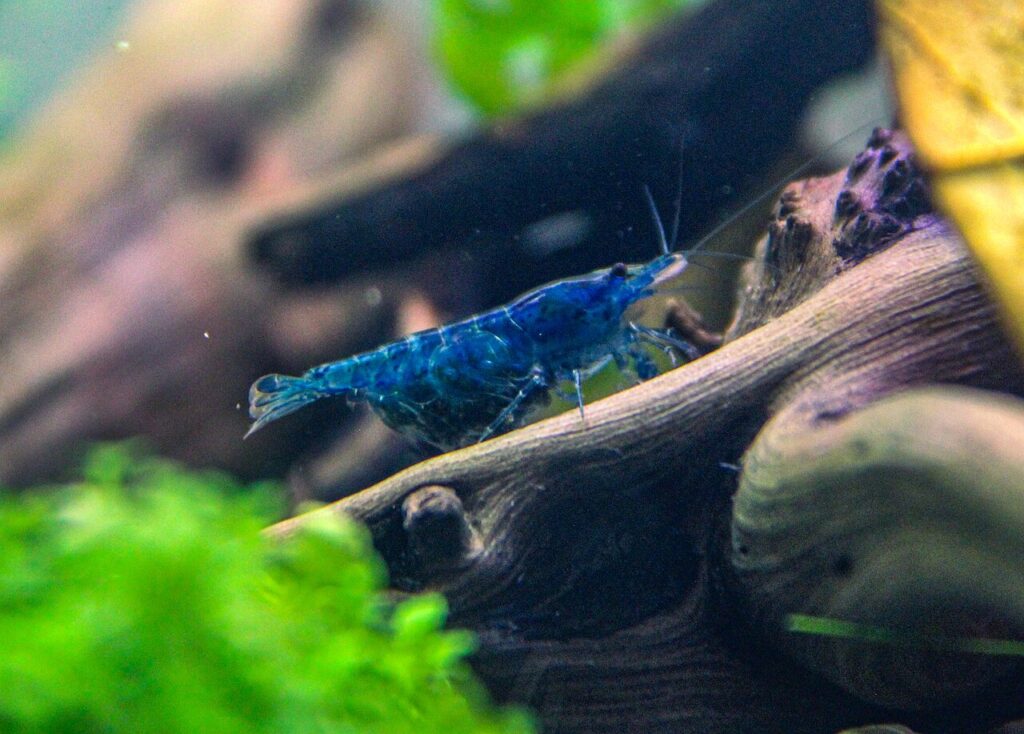
Key Information
Cherry Shrimp (Neocaridina davidi) are a popular freshwater aquarium shrimp known for their vibrant colors, which can range from deep red to pale pink, and even include variations like orange, yellow, blue, and green. These striking hues make them a visually appealing addition to any aquarium, and their color intensity can be influenced by factors such as genetics, diet, and water parameters.
| Family | Atyidae |
| Origin | Taiwan |
| Price | $2 to $10 per shrimp, depending on color and grade |
| Common Names | Cherry Shrimp, Red Cherry Shrimp, Neocaridina Shrimp |
| Variants | Red, Pink, Orange, Yellow, Blue, Green, Black, Snowball |
| Ideal Tank Size | Minimum 5 gallons (19 liters) |
| Water Parameters | Temperature: 65-85°F (18-29°C), pH: 6.5-8.0, Hardness: 3-15 dKH |
| Lifespan | 1-2 years in the wild, 2-3 years in captivity |
| Full Size | Males: 1 inch (2.5 cm), Females: 1.5 inches (4 cm) |
| Natural Environment | Freshwater streams and rivers |
| Behavior | Peaceful, active, and social |
| Habitat Preference | Bottom-dwellers, prefer heavily planted tanks with hiding spots |
| Aquarium Decoration | Live plants, driftwood, rocks, and hiding places |
| Ideal Tank Mates | Small, peaceful fish (e.g., Ember Tetras, Endlers Livebearers, Pygmy Corydoras), other shrimp, and snails |
| Fish to Avoid | Large, aggressive fish that may view shrimp as food |
| Best Foods/Diet | Algae, biofilm, detritus, supplemented with high-quality shrimp food, blanched vegetables, and leaf litter |
| Disease | Susceptible to bacterial and fungal infections, as well as molting problems |
| Sex-Switch | Does not occur in Cherry Shrimp |
| Gender Differences | Females are larger and have a more rounded underbelly, males are smaller and have a slimmer profile |
| Care Level | Easy |
| Breeding Level | Easy, females carry eggs for about 30 days before shrimplets hatch |
Ideal Tank Mates
When selecting tank mates for Cherry Shrimp (Neocaridina davidi), it’s essential to choose species that are peaceful, small, and have similar water parameter requirements. Compatibility is key to ensuring a harmonious and thriving aquarium environment.
Ideal tank mates for Cherry Shrimp should not view them as a food source and should not outcompete them for resources. Additionally, it’s crucial to maintain a well-planted aquarium with plenty of hiding spots to provide shelter and security for the shrimp.
Here are 15 ideal tank mates for Cherry Shrimp, along with explanations of why they are compatible:
Ember Tetras (Hyphessobrycon amandae)
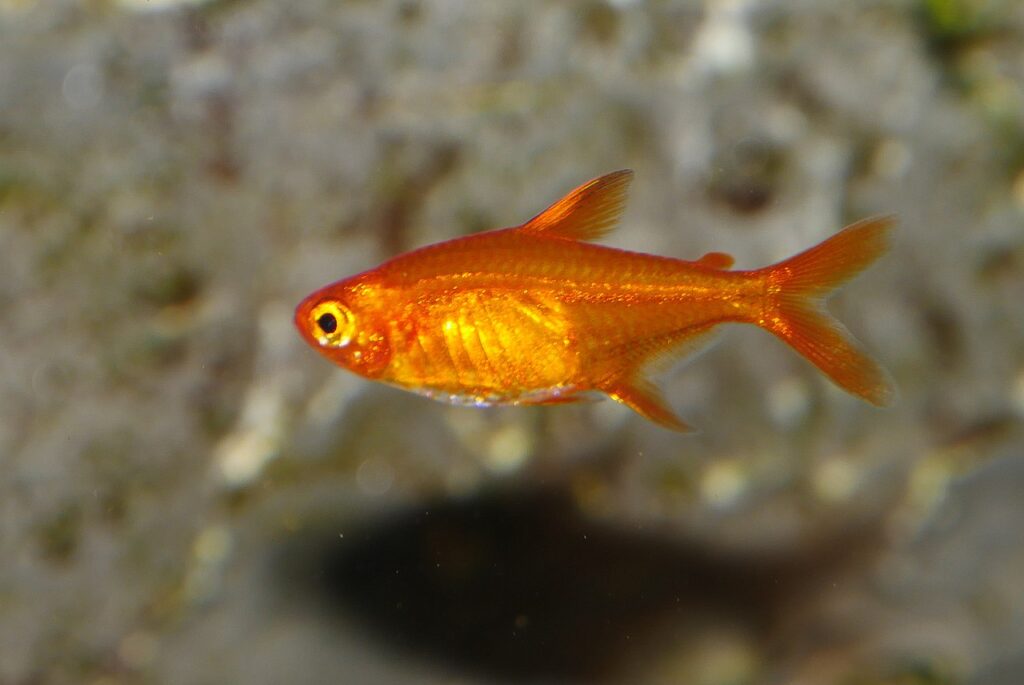
These tiny, peaceful fish are perfect tank mates for Cherry Shrimp. They prefer similar water parameters and are too small to pose a threat to adult shrimp. Ember Tetras also add a vibrant splash of color to the aquarium.
Endlers Livebearers (Poecilia wingei)
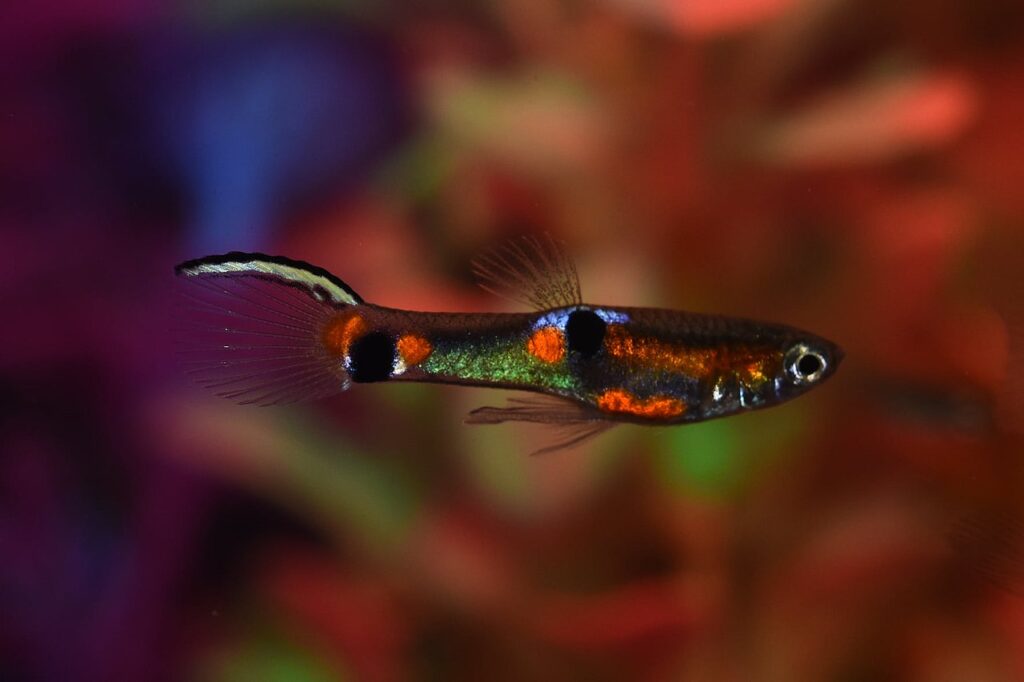
Endlers Livebearers are small, colorful, and peaceful fish that coexist well with Cherry Shrimp. They occupy the upper levels of the aquarium, leaving plenty of space for the shrimp to thrive in the lower levels.
Pygmy Corydoras (Corydoras pygmaeus)
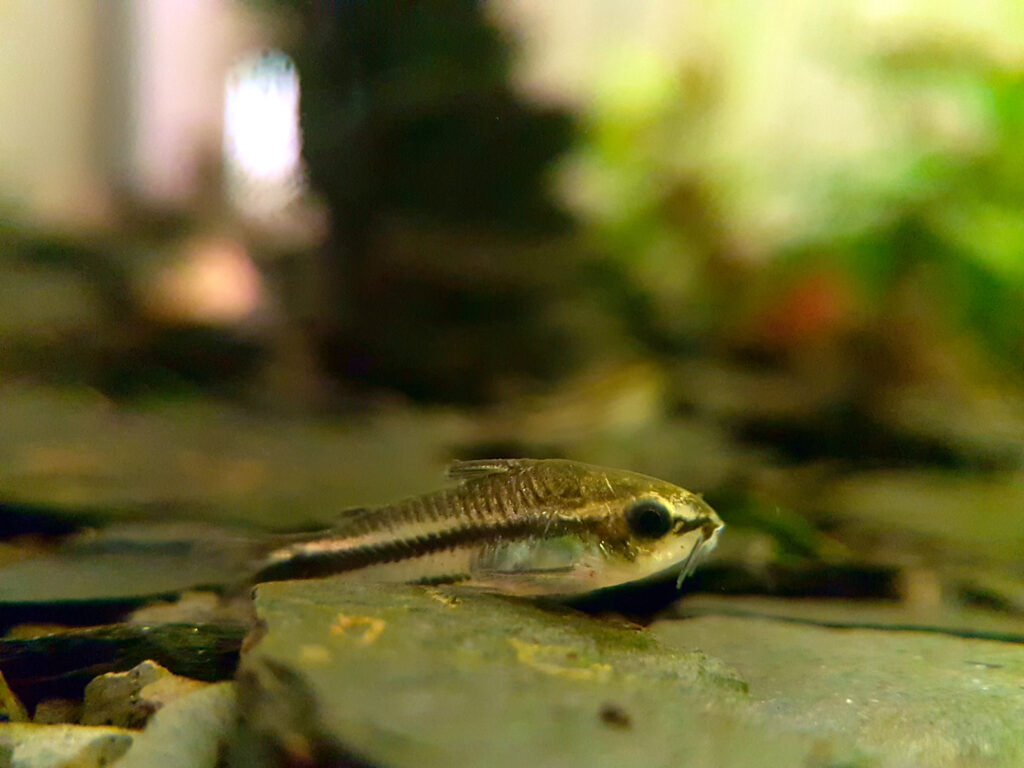
These miniature catfish are gentle bottom-dwellers that won’t disturb the shrimp. They are excellent scavengers and help keep the aquarium clean by consuming leftover food particles.
Otocinclus Catfish (Otocinclus spp.)
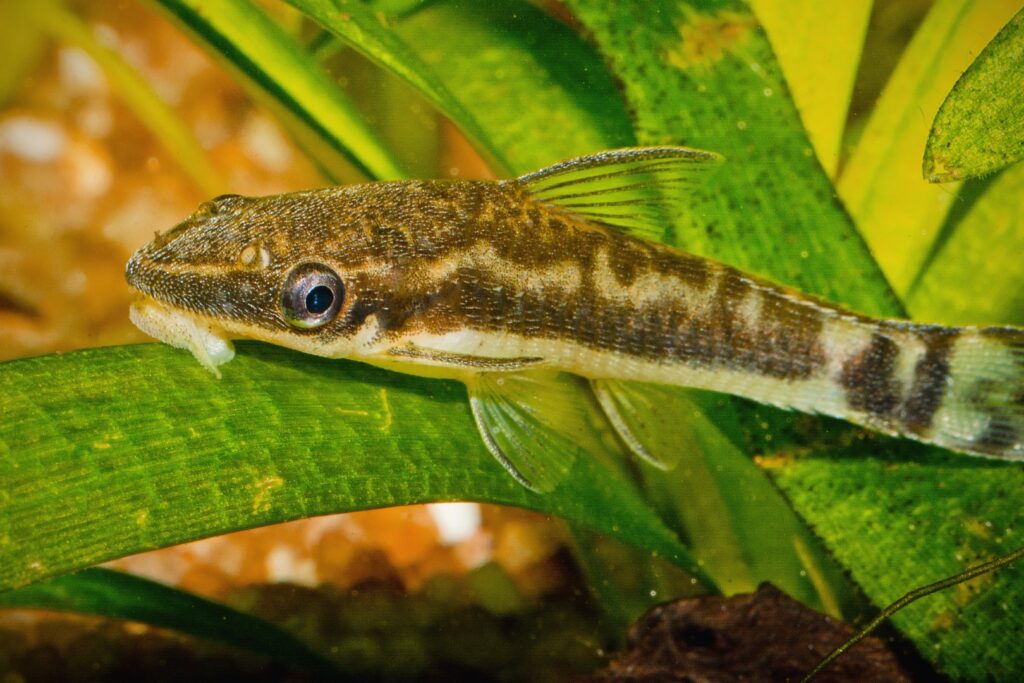
Otocinclus Catfish are small, peaceful algae eaters that make great tank mates for Cherry Shrimp. They help control algae growth in the aquarium and won’t bother the shrimp.
Harlequin Rasboras (Trigonostigma heteromorpha)
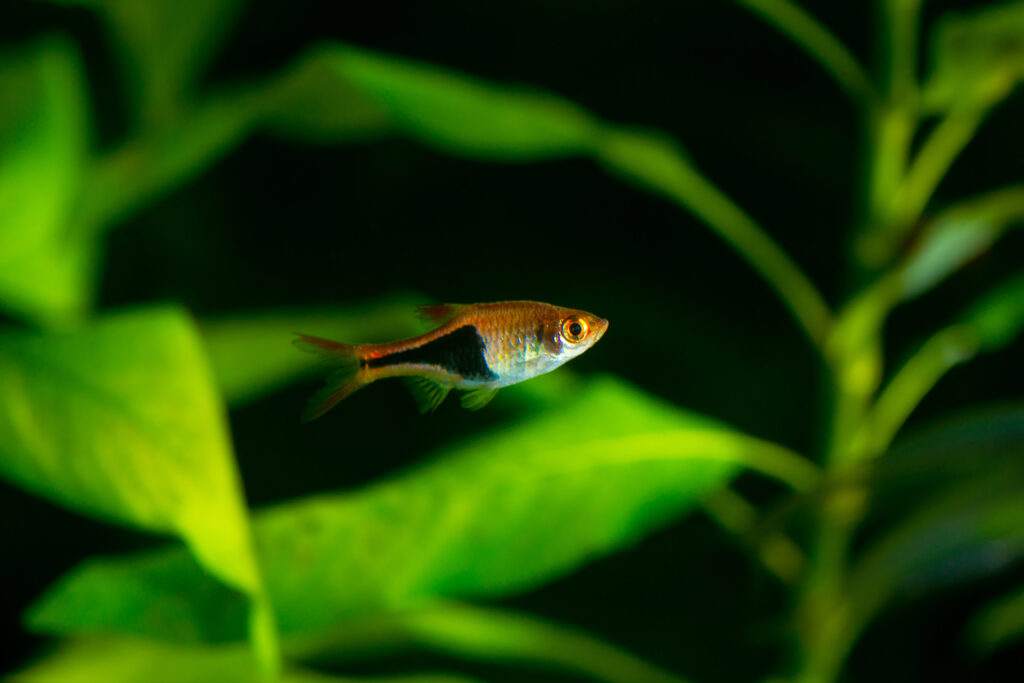
These small, schooling fish are peaceful and adapt well to the same water conditions as Cherry Shrimp. They occupy the mid-level of the aquarium, providing a dynamic display without interfering with the shrimp.
Chili Rasboras (Boraras brigittae)
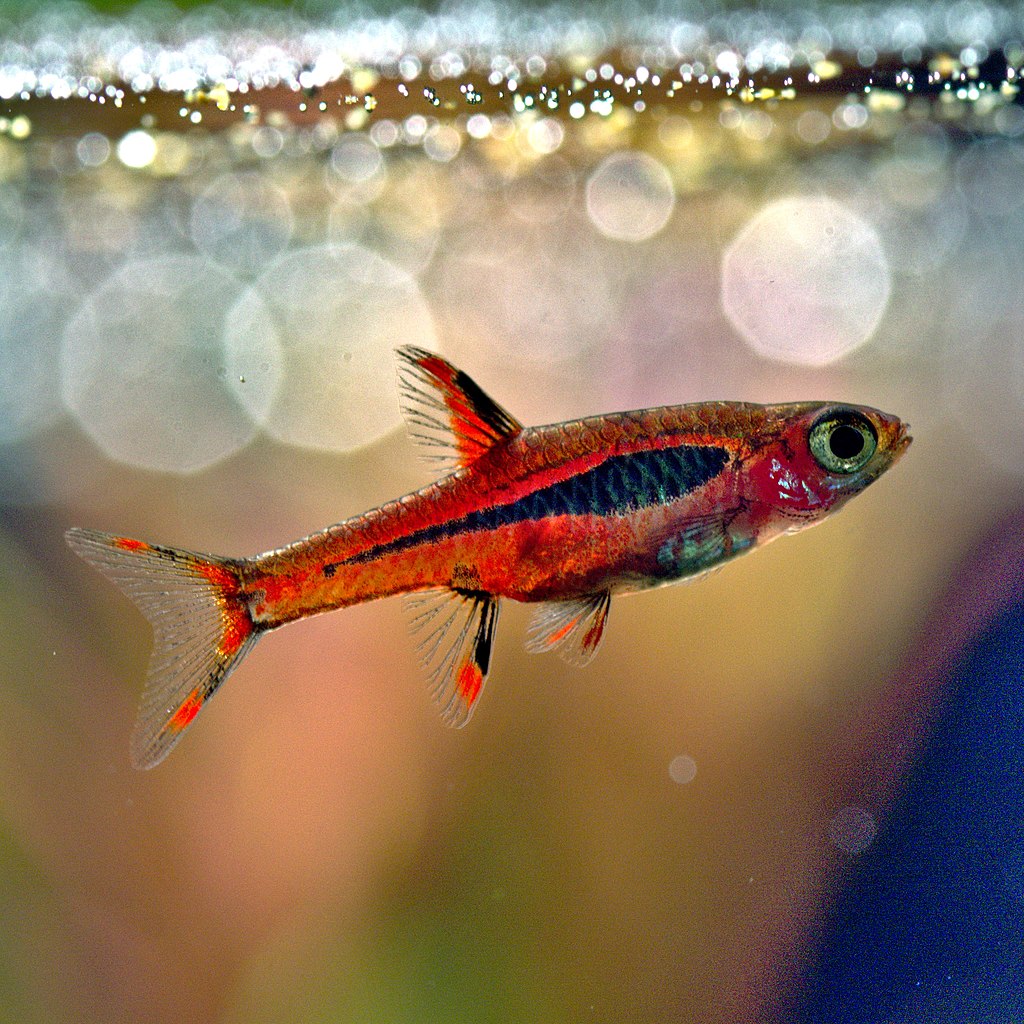
Chili Rasboras are tiny, colorful fish that thrive in the same water conditions as Cherry Shrimp. They are too small to pose a threat to adult shrimp and add a lively presence to the upper levels of the aquarium.
Celestial Pearl Danios (Danio margaritatus)
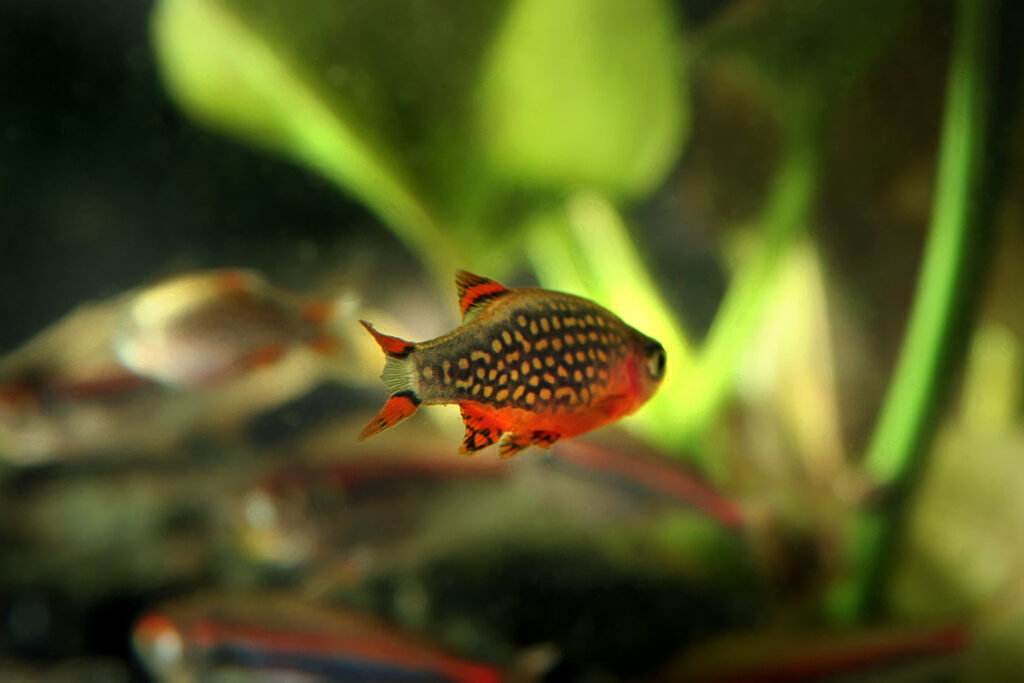
These beautiful, small fish are peaceful and well-suited to the same water parameters as Cherry Shrimp. They are active swimmers that occupy the mid-to-upper levels of the aquarium, leaving the shrimp undisturbed.
Dwarf Corydoras (Corydoras hastatus)
Similar to Pygmy Corydoras, Dwarf Corydoras are small, peaceful bottom-dwellers that won’t bother the shrimp. They are efficient scavengers and help maintain a clean aquarium environment.
Least Killifish (Heterandria formosa)
Least Killifish are tiny, peaceful fish that adapt well to the same water conditions as Cherry Shrimp. They are too small to view adult shrimp as food and occupy the upper levels of the aquarium.
Dwarf Pencilfish (Nannostomus marginatus)
These slender, peaceful fish make excellent tank mates for Cherry Shrimp. They prefer similar water parameters and are too small to pose a threat to adult shrimp.
Micro Rasboras (Boraras spp.)
Various species of Micro Rasboras, such as Mosquito Rasboras and Phoenix Rasboras, are tiny, peaceful fish that thrive in the same conditions as Cherry Shrimp. They add color and activity to the upper levels of the aquarium without disturbing the shrimp.
Pygmy Hatchetfish (Carnegiella myersi)
Pygmy Hatchetfish are small, peaceful surface-dwellers that won’t interact much with Cherry Shrimp. They adapt well to the same water parameters and add interest to the top level of the aquarium.
Dwarf Otocinclus (Otocinclus vittatus)
Similar to regular Otocinclus Catfish, Dwarf Otocinclus are small, peaceful algae eaters that coexist well with Cherry Shrimp. They help control algae growth and won’t compete with the shrimp for resources.
Lambchop Rasboras (Trigonostigma espei)
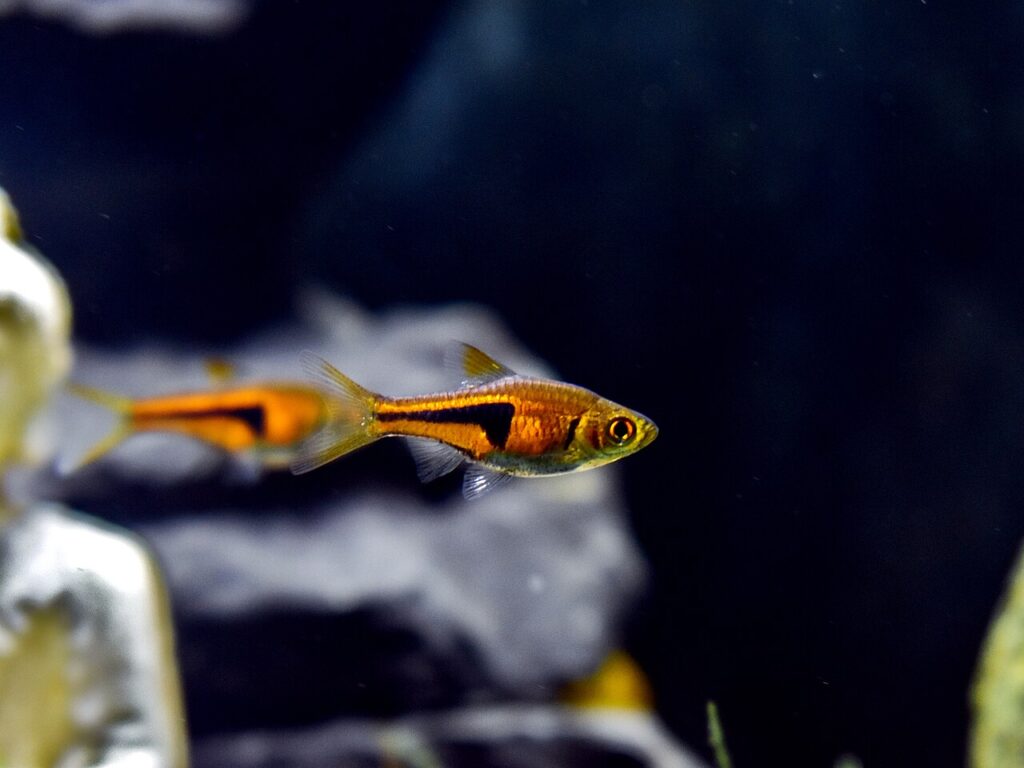
Lambchop Rasboras are peaceful, schooling fish that adapt well to the same water conditions as Cherry Shrimp. They occupy the mid-to-upper levels of the aquarium and won’t disturb the shrimp.
Clown Killifish (Epiplatys annulatus)
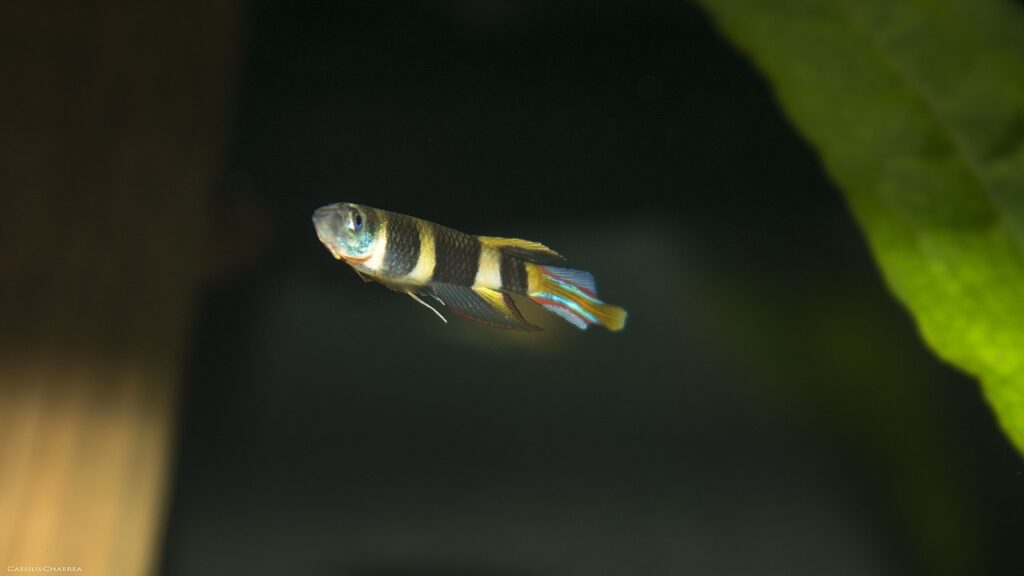
Clown Killifish are small, colorful, and peaceful fish that thrive in the same water parameters as Cherry Shrimp. They are active swimmers that occupy the upper levels of the aquarium, leaving the shrimp undisturbed.
FAQs
How often do Cherry Shrimp molt?
Cherry Shrimp typically molt every 4-6 weeks, depending on factors such as age, growth rate, and water parameters. Molting is a natural process that allows the shrimp to grow and replace their exoskeleton.
Can Cherry Shrimp live with Bettas?
While some Bettas may coexist peacefully with Cherry Shrimp, it is generally not recommended to keep them together. Bettas are known for their aggressive behavior and may view the shrimp as prey, particularly if the Betta is underfed or the aquarium lacks sufficient hiding spots.
Do Cherry Shrimp need a heater?
Cherry Shrimp are adaptable to a wide range of temperatures (65-85°F or 18-29°C) and do not necessarily require a heater. However, if you live in an area with cool ambient temperatures or your aquarium experiences significant temperature fluctuations, a heater can help maintain a stable environment.
Can Cherry Shrimp live in tap water?
While Cherry Shrimp are relatively hardy, it is essential to use dechlorinated water in their aquarium. Tap water often contains chlorine or chloramine, which can be harmful to shrimp. Use a water conditioner to remove these substances before adding the water to your tank.
How many Cherry Shrimp can I keep per gallon?
A general rule of thumb is to keep 2-5 Cherry Shrimp per gallon of water. However, this number can vary depending on the size of your aquarium, filtration capacity, and the presence of other tank mates. It’s essential to monitor water quality and avoid overstocking to maintain a healthy environment.
Do Cherry Shrimp need a filter?
While Cherry Shrimp have a low bioload, a filter is still recommended to maintain good water quality and circulation. A gentle sponge filter or a small hang-on-back filter with a pre-filter sponge to prevent shrimp from being sucked in is suitable for a Cherry Shrimp tank.
Can Cherry Shrimp eat fish food?
Cherry Shrimp are omnivores and can consume a variety of foods, including fish food. However, it’s essential to provide a balanced diet that includes algae, biofilm, and specialized shrimp food to ensure they receive proper nutrition. Overfeeding can lead to water quality issues, so be mindful of the amount of food offered.
How long do Cherry Shrimp eggs take to hatch?
After the female Cherry Shrimp carries the eggs for about 30 days, the eggs will hatch, and tiny shrimplets will emerge. These juvenile shrimp will resemble miniature versions of the adults and will gradually grow and develop their coloration over the next few weeks.
Can Cherry Shrimp live without plants?
While Cherry Shrimp can survive without plants, a well-planted aquarium is highly recommended. Plants provide shelter, food sources (in the form of biofilm and algae), and help maintain good water quality. They also create a more natural and visually appealing environment for your shrimp.
Do Cherry Shrimp need special lighting?
Cherry Shrimp do not have specific lighting requirements and can adapt to a variety of aquarium lighting conditions. However, if you plan to keep live plants in your shrimp tank, you will need to provide appropriate lighting to support plant growth and health.